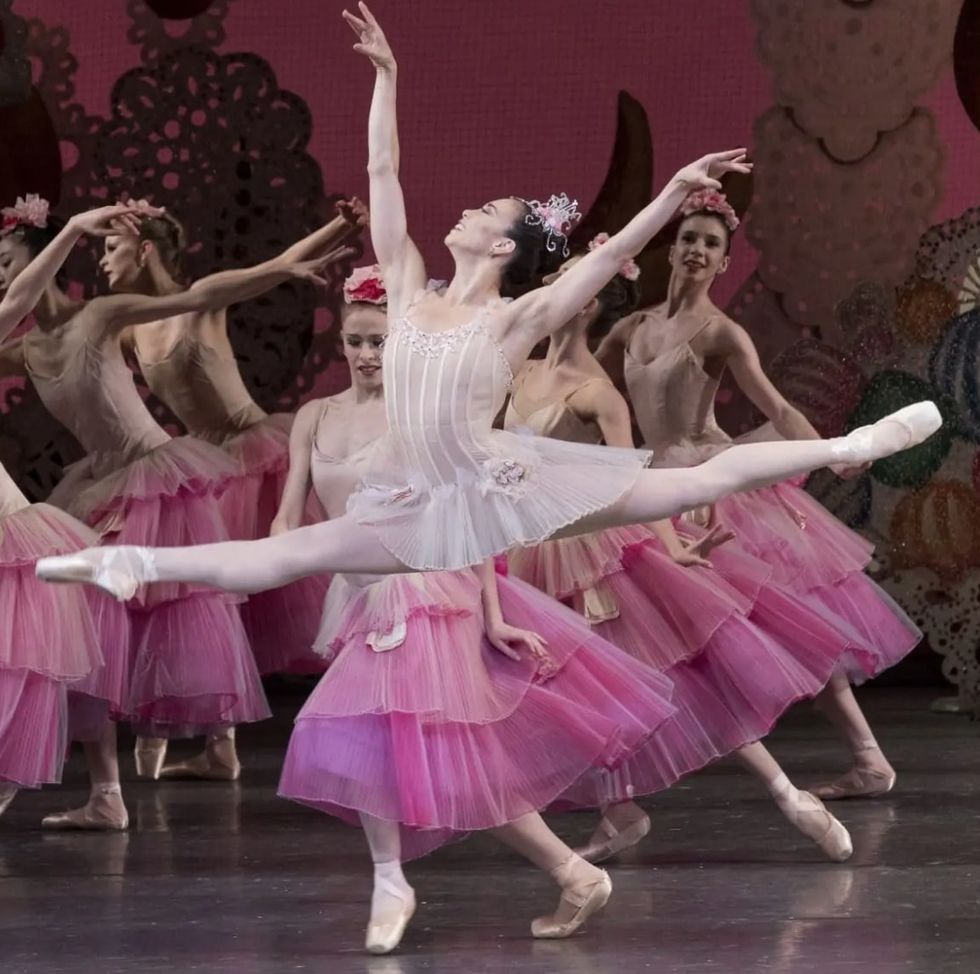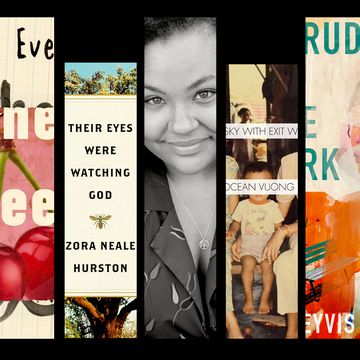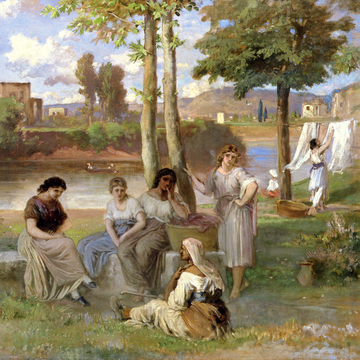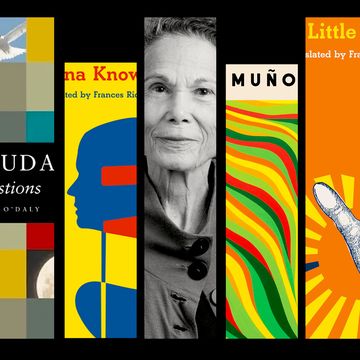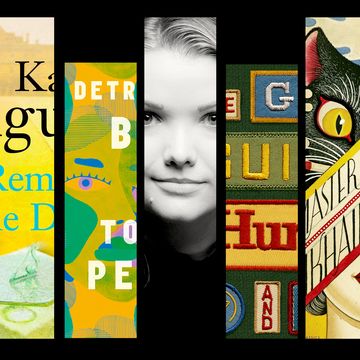“Geoorginnahhhh. Hey, gurl! You ready to get up on that stage with your ethnic family?”
One of the senior corps members and one fine-ass Black man, Henry, called out jokingly before we got on stage, doing his best to conjure up the voice of an old-timey Southern man. I laughed it off, preparing myself mentally and physically to do my job. I was a raven-haired apprentice newbie, cast as a maid in my first City Ballet Nutcracker because I was new. But it was clear I’d made B cast for a very different reason: my race. The older dancers joked about the B cast all the time—B cast = POC. A cast = lighter-skinned folk.
(I’m talking about the race of the adults in the party scene. I’m not referring to the nine million children it takes to pull off a production of The Nutcracker. The cast of POC adults was a weird and consistent phenomenon for years until dancers finally spoke up and it was finally addressed. Hallelujah for A and B cast integration!)
It didn’t take long for it to sink in that there was an actual, visible division in the casting of the New York City Ballet under Peter Martin’s direction. It wasn’t always as blatant and painfully obvious as it was with the B cast Nutcracker—we were virtually all people of color. But generally, if you were a member of the New York City ballet and you had black hair, you could enjoy a career of dancing in the B cast or as an evil villain. Romeo + Juliet? Montagues were the blonds, Capulets were the dark-haired people. The villain was played by Albert or some other available Black dude. Every. Single. Time. Need an ambiguously ethnic, badass female? It’s Paz to the rescue! It is shameful that it has taken the ballet thirty years to figure out that these casting divisions are deleterious to audience and cultural perceptions and shouldn’t be the norm.
Frankly, I felt awkward when I looked around and realized the entire B cast was made up of biracial folks (myself included), and that I’d likely be typecast my entire career. The ballet is finally waking up, but it doesn’t change the fact that thousands of Nutcracker performances still featured a B cast of color. The dancers are determined to change the landscape. Come next Nutcracker season, I assure you things are going to look different. Balanchine himself was said to refer to dancers as being flowers of all colors. We are committed to making that happen, now. Even if it seems at times that I personally have to hold people accountable. Old habits die hard.
Yes, casting minorities for the B cast and Eurocentric races for the A cast was blatantly racist and wrong. But at least every member of the B cast had a helluva lot of fun working together. There is something about the monotony of Nutbuster that usually leads to a prankish atmosphere. In the corps, most of us are playing introductory roles—maids, parents, flowers, mice—and after, say, thirty performances, it starts to feel like the movie Groundhog Day, a replica of the night before. If we aren’t careful, monotony will completely take over, numbing our bodies, minds, and souls, so we take measures to jazz things up a bit. During The Nutcracker, we are all still attending company class as well as rehearsing for the winter season. Come New Year’s Eve, The Nutcracker will be almost instantaneously replaced with another series of ballets, and we all need to be on our game and ready to perform.
All work and no play make for dull ballerinas. So we loosen things up a bit and let our guards down. If you’ve attended The Nutcracker at Lincoln Center, chances are your eyes were following those adorable little children (every season, one of those darlings gets so nervous she pees right there onstage, God bless her), and you weren’t watching the adults. Because if you were paying attention, you would have observed some crazy shit. You would have seen men who are now principal dancers in the classiest of ballet companies walking with their eyes closed and arms out, stumbling and nearly falling out the window. You would have seen mice voguing—pretending to eat the cheese, tossing it around...Cheese tossing was not part of Jerome Robbins’s original battle scene choreography.
Eventually these antics reached a fever pitch, and New Year’s Eve became the performance where we all joked around on purpose. Can you blame us? New Year’s represents the last of a long string of ruthless, repetitive performances, and if we were lucky, we’d have enough energy left to have one or two drinks at someone’s house party—only to head home shortly after midnight and crash, hard. New Year’s Day is always a day off, and most of us put it to very good use...sleeping like the dead.
One year, Stephanie, my partner in the Chinese Tea number, and I were chastised for acting up onstage. It’s honestly not too taxing of a dance. We were exaggerating all the movements and ginormous piqués, balancing, and piking contests. We thought we were being terrifically entertaining and hilarious, and judging by the miniaudience we had amassed in the wings every night—we were getting the Siskel & Ebert two-thumbs-up review.
“Ladies, you’re so over the top no one is paying any attention to the principal dancer.” Which was hard not to do because he was the most atrocious trope, dressed as a coolie—garish in his rice paddy hat, Fu Manchu mustache, and slanty-eye yellowface makeup, while doing split jumps. And to make it all worse the principal dancer is emasculated by being stuffed into a box and wheeled out by Stephanie and me—and out he pops out of the “tea box.” Oh, really? Tea comes in a box? You don’t say? Truly intended to be a charming moment perceived horribly wrong by a major part of the audience.
“You’ve got to dial it down!”
For us to steal the focus in such a scene was a feat in itself. Upon reflection, I suspect my raucous portrayal was born out of a feeling of extreme discomfort. My morality was being challenged. The Chinese Tea dance is, in my opinion, over-the-top offensive, and every night I was forced to go onstage to make a mockery of Asian heritage (including my own). The number, and ballet in general, still features some of the worst Asian stereotypes ever conceived—pointed hats, yellow-tinted face paint, slanted-eye makeup—the audience sees, but do they care?
If that doesn’t make you queasy, the choreography consists of pointing fingers in a “chop chop” motion and shuffling feet, multiple head nods and bows—so Asiatic! The icing on this racist cake is a stereotypical geisha wig—wrong culture, pro tip, but let’s just lump all of us together, shall we? No nuance needed. Just caricatured orientalism.
Despite my gleeful rebellion, once we were called out on our behavior, we agreed to knock it off. Apparently, we weren’t the only members of the company who were itching from Nutcracker fever, and messing around, because soon there was an announcement from Peter himself that this New Year’s Eve there would be “no antics whatsoever.” Fair enough, we are professionals. I wanted to live to see the new year. But not everyone was so happy to fall in line.
Steph and I were ready to go out for the finale—we were in our costumes complete with wigs and makeup. And yes, we were on our absolute best behavior. I leaped out onstage, twirling around Steph, doing the dance as intended. As per the choreography, I whipped my head forward and lifted it back up. Chop chop! But I noticed something immediately—my head felt wrong. Too light. I realized instantly that my horrible, racist wig had fallen off and landed directly in the path of principal Tea dancer Antonio Carmena. Fucking hell. There I was, standing onstage decked out in yellowface with just a black wig cap.
The audience found this hilarious—her wig fell off! They all began laughing, loudly.
There’s an unspoken rule that if you drop something onstage—a wig, a shoe, a hat—you find a way to discreetly pick it up and remove it from the stage during your exit. But something about the way we were all positioned made me unable to get to where the wig had landed.
Out bounded Dew Drop, played with supreme grace by principal dancer Alexandra Ansanelli, who swept down and grabbed the wig and finished her finale step, dead center stage, with a series of relevé in passe arabesque turns—alternating the wig between her hands with each turn. While I’m on the side of the stage in my bald cap trying not to pee myself with laughter but also thinking, Welp. I’m going to get fired.
The crowd went wild! My coworkers who were actually onstage were also dying with laughter. Dew Drop spun and spun, basking in the moment, then saut de chat’d triumphantly off the stage. We were all dead—yet I feared I’d become a huge unintentional joke.
When Peter came up to me after, I was trembling.
“GINA! Did you do that on purpose?! Did you not pin it?”
My wig, the pesky culprit, now looked like a dead bird resting in my hand. I responded that Of course I pinned my wig. It came off due to the fervor of my dancing! I was upset, scared. I didn’t know what the repercussions would be. He placed his huge hands on my shoulders, a gesture many of us had experienced with differing reactions. In this case his attempt at a simple physical connection felt like a signal of power. But then a chuckle broke from his otherwise stone-cold face.
“Pretty funny, though.”
He walked away, and thank all the muses of ballet that I didn’t get in trouble—but I was still mortified. My boss was laughing at me, too. They made a rule from that performance on that the costume department now attaches all wigs, and I was thankfully moved out of the Chinese cast the next season, leaving other, less fortunate ballerinas to perform yellowface onstage.
I never felt comfortable with this depiction of Asian culture. There I was onstage, a biracial woman with Asian Filipino heritage, improperly representing Chinese culture with an outdated caricature. It never felt right to me. As a young member of the company at that time, I was not in a position to announce, “I’m uncomfortable doing this. This is racist.” I couldn’t turn around to my colleagues and shout, “Are you all really okay with this?” Allen, whose mother is Japanese, was one of the only other Asian dancers in the company with me at that time. The depiction of the culture was wrong, and so was the culture that permeated City Ballet. I believe had I expressed my feelings, I would have been pushed aside, my role given to another dancer who would be happy to step into the role. Shut up and dance was the sentiment.
It wasn’t until 2017 and joining the new state-mandated diversity committee that I was able to make use of these memories and get to the root of why I couldn’t take this seriously. I also know now that I tend to default to humor when I feel awkward. I could not do the dance seriously because it felt so wrong to be making fun of Asian heritage. To be standing onstage, a biracial Asian American woman in yellowface makeup. There was no way I could approach this dance the way I approach Jewels, or other ballets I love performing in. I know my treatment of the Chinese dance was wrapped in disrespect; this was my own form of rebellion. The Nutcracker is literally a peek around the world, and I believe we can do better when it comes to depicting different cultures. My dear friend and personal dance historian, Phil Chan, and I are determined to do better. We started the Final Bow for Yellowface pledge, urging dance companies around the world to eliminate Asian stereotypes from ballet. We’re now a globally recognized initiative, and changes are happening. In 2019, the NYCB’s Marie was a biracial Trinidadian Filipino girl. I like to think Final Bow for Yellowface’s work paved the way for that to happen. All of this piping “hot Tea” makes the “We don’t have enough shows for you to debut Sugar Plum, Gina” look a bit more nefarious, doesn’t it now?
It’s usually sometime in mid to late fall that I’ll be walking my dog out of Central Park, when I notice a sign on a bus stop—“New York City Ballet presents The Nutcracker, November 23rd through December 30th.” Here we go. So much has changed at the ballet over the past year at the time of this writing. I think about the abuse we have faced as a company under Peter’s reign. How it’s left many of us wounded but recovering. Our resilience will be put to the test again as the Nutbuster season comes rushing upon us. But soon we will be stepping back into that rehearsal studio, scratching our heads over the indecipherable chicken scratch of a schedule, hoping not to get peed on, knowing we’ll be ordering Christmas presents during rehearsal breaks, declining invites to holiday parties (if anyone bothers to invite us), and dumping gallons of fake snow out of pointe shoes. While I can’t exactly say I’m excited to hear the famous opening notes to Tchaikovsky’s score, as I write this, I find myself for once feeling a bit hopeful. There are fewer of us now, but we are strong, optimistic, and hella determined. It might be a new start—a time to bond as we work together through the craziness of all these shows. Maybe this year, when that snow falls—it will be like a beginning. I walk into my apartment, and Jett goes to lie in her bed. I sit down to check my email. If I had any doubts at all that the mayhem was about to begin in earnest, it’s gone. There it is, sitting in my inbox—it’s the official first forwarding of the link to “It’s Decorative Gourd Season, Motherfuckers.” The classic fall essay by Colin Nissan really speaks to me, especially when he says, “Felonies and gourds have one very important commonality: they’re both extremely fucking real.” Oh, they are, and you know what else is real? Constant rehearsals with ballerinas on the verge of cutting someone, dancing with a sinus infection you caught when some skanky biohazard snow lodged right up there in your nasal passages, sliding your pretty pink pointe shoe through piss. Merry Christmas, everyone! Shit is about to get real.
Excerpted from SWAN DIVE: The Making of a Rogue Ballerina by Georgina Pazcoguin. Published by Henry Holt and Company. Copyright © 2021 by Georgina Pazcoguin. All rights reserved.


